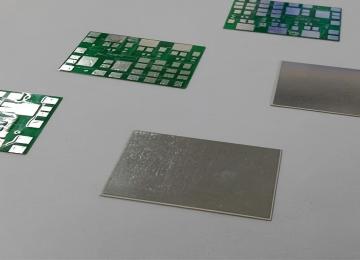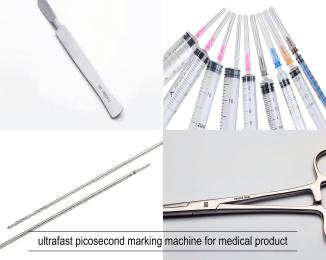
News
How to choose a glass substrate laser drilling machine? Analysis of three core elements.
In the field of glass substrate processing, the performance of laser drilling equipment directly affects product quality and production efficiency.
Faced with numerous models on the market, how should companies choose?
This article reveals the key elements of high-quality laser drilling equipment from the perspectives of technical principles, core components, and practical applications.
I. Laser: The core component that determines accuracy and efficiency
The laser is the "heart" of laser drilling equipment. Ultrafast lasers (such as picosecond and femtosecond lasers) offer extremely short pulse widths and high peak power, enabling cold processing on glass substrates with a heat-affected zone of less than 50μm and a chipping amount of less than 15μm. Advanced laser drilling equipment utilizes femtosecond lasers, combined with 3D dynamic focusing technology, to machine micro-holes with a diameter of 0.005mm on 0.1mm ultra-thin glass, leading the industry in precision. Compared to traditional CO2 lasers, ultrafast lasers increase processing efficiency by more than 50%, making them particularly suitable for precision processing of high-end electronic glass.
II. Motion and Positioning System: The key to ensuring processing stability
A high-precision motion platform and positioning system are essential supports for laser drilling equipment. High-quality equipment typically uses a marble base, which offers high rigidity and a low expansion coefficient to reduce vibration and deformation. With linear motors and grating scales, the positioning accuracy can reach ±2μm. The equipment is equipped with a dual-station vacuum suction platform, allowing for rapid switching and precise positioning of workpieces. Additionally, a vision recognition system automatically calibrates to ensure that the drilling position matches the design drawing exactly.
III. Intelligent and Automated Design: The core driving force for increasing production capacity
Modern laser drilling equipment must be equipped with efficient intelligent and automated functions. A dual-laser head design allows for simultaneous processing of multiple stations, and with a robotic loading and unloading system, 24-hour unattended production is achievable. The AI algorithm on board can automatically optimize processing parameters based on the glass material and thickness, reducing manual intervention. For example, when processing photovoltaic glass, the system can intelligently adjust the laser energy to avoid the risk of cracking, and the output per shift can reach three times that of traditional equipment.
Practical applications of laser drilling equipment
Electronic glass processing: In the machining of camera holes and speaker holes on smartphone screens and tablet computer cover glass, the non-contact processing of laser drilling equipment avoids glass breakage, achieving a hole diameter consistency of 99.8% and a yield rate of over 98%.
Photovoltaic module manufacturing: For drilling holes on the backside of photovoltaic glass, the equipment can complete the machining of through-holes with a diameter of 2mm within 1 second, and the hole walls are smooth without burrs, ensuring the sealing performance and service life of the modules. After adopting this equipment, a photovoltaic company reduced its annual production costs by 15%.
High-end optical components: In the processing of sapphire windows and precision optical lenses, the equipment's micron-level precision meets the strict requirements of optical imaging for hole positions, helping companies break through technological barriers.
As a core piece of equipment for glass substrate processing, laser drilling equipment has been widely applied in various industries around the world. High-quality equipment, certified internationally, offers comprehensive after-sales service and technical support.
Whether for high-precision micro-hole processing or complex custom-shaped hole production, laser drilling equipment can provide a one-stop solution based on needs. Choose laser drilling equipment, choose the future benchmark for glass substrate processing!
-
What are the precautions for operating a laser marking machine?
1. It is strictly prohibited to start the laser power supply and Q-switching power supply when there is no water or the water circulation is abnormal.
2. The Q power supply is not allowed to operate without load (i.e., the output terminal of the Q power supply should be left floating).
3. In case of any abnormal phenomenon, first turn off the galvanometer switch and the key switch, and then conduct a check.
4. It is not allowed to start other components before the krypton lamp is lit to prevent high voltage from entering and damaging the components.
5. Pay attention to leaving the output terminal (anode) of the laser power supply suspended to prevent sparking and breakdown with other electrical appliances.
6. Keep the internal circulating water clean. Regularly clean the water tank and replace it with clean deionized water or pure water.
-
What should we do when laser intensity decreases and the marking is not clear enough?
1. Turn off the machine and check if the laser resonant cavity has changed; Fine-tune the resonant cavity lens. Make the output light spot the best;
2. The acousto-optic crystal is offset or the output energy of the acousto-optic power supply is too low;
Adjust the position of the audio-visual crystal or increase the working current of the audio-visual power supply;
3. The laser entering the galvanometer deviates from the center: Adjust the laser;
4. If the current is adjusted to around 20A but the light sensitivity is still insufficient: the krypton lamp is aging. Replace it with a new one.
-
How to maintain a UV laser cutting machine?
1. It is required to carry out regular cleaning every day, remove debris from the countertop, limiters and guide rails, and spray lubricating oil on the guide rails
2. The waste materials in the collection box should be cleared regularly to prevent excessive waste from blocking the exhaust port.
3. Clean the chiller once every 15 days, drain all the internal water, and then fill it with fresh pure water.
4. The reflector and focusing lens should be wiped with a special cleaning solution every 6 to 8 hours.
When wiping, use a cotton swab or cotton swab dipped in the cleaning solution to wipe from the center to the edge of the focusing lens in a counterclockwise direction.
At the same time, be careful not to scratch the lens.
5. The indoor environment can affect the lifespan of the machine, especially in damp and dusty conditions.
A damp environment is prone to causing rust on the reflective lenses and also easily leading to short circuits, discharge and sparking of the velvet laser.
-
What accidents might be caused by the laser emission when using a laser cutting machine?
(1) A fire was caused by the laser coming into contact with flammable materials.
Everyone knows that the power of laser generators is very high, especially when it comes to high-power laser cutting machines, the temperature of the emitted laser is extremely high. The possibility of a fire being caused when a laser beam comes into contact with flammable objects is very high.
(2) Harmful gases may be produced when the machine is in operation.
For instance, when cutting with oxygen, it undergoes a chemical reaction with the cutting material, generating unknown chemical substances or fine particles and other impurities. After being absorbed by the human body, it may cause allergic reactions or discomfort in the lungs and other respiratory tracts. Protective measures should be taken when conducting work.
(3) Direct laser exposure to the human body can be harmful.
The damage caused by lasers to the human body mainly includes damage to the eyes and skin. Among the harms caused by lasers, the damage to the eyes is the most severe. Moreover, damage to the eyes is permanent. So when doing homework, you must pay attention to protecting your eyes.
-
What is the focused spot diameter of nanosecond, picosecond and femtosecond laser?
Nanosecond: The light spot is 0.5-1mm.
Picosecond: The focused spot is around 0.02mm.
Femtosecond: Under the action of a laser beam with a high repetition rate of 100-200KHz and a very short pulse width of 10ps,
the focused spot diameter is as small as 0.003mm.
-
What are the main applications of UV laser cutting machine?
The UV laser cutting machine can be used for cutting and depaneling PCB.
It can precisely cut and shape various types of PCB circuit boards with V-CUT and stamp holes, and open Windows and covers.
It can also be used for separating packaged circuit boards and ordinary smooth boards.
It is suitable for cutting various types of PCB substrates, such as ceramic substrates, rigid-flex boards, FR4, PCBs, FPCs, fingerprint recognition modules, cover films, composite materials, copper substrates, aluminum substrates, etc.
-
Precautions for laser cutting machines to process various metal materials?
Copper and brass:
Both materials have high reflectivity and excellent thermal conductivity.
Brass with a thickness of less than 1mm can be processed by nitrogen laser cutting.
Copper with a thickness of less than 2mm can be cut. The gas used for laser cutting processing must be oxygen.
Copper and brass can only be cut when a "reflective absorption" device is installed on the system. Otherwise, reflection will damage the optical components.
Synthetic materials:
Processable synthetic materials include: thermoplastics, thermosetting materials and artificial rubber.
Aluminum:
Despite its high reflectivity and thermal conductivity, aluminum materials with a thickness of less than 6mm can be cut, depending on the type of alloy and the capacity of the laser.
When cutting with oxygen, the cutting surface is rough and hard.
When nitrogen is used, the cutting surface is smooth.
Pure aluminum is extremely difficult to cut due to its high purity.
Only when a "reflection and absorption" device is installed on the fiber laser cutting machine system can aluminum materials be cut.
Otherwise, reflection will damage the optical components
-
What should be paid attention to when laser cutting stainless steel?
Laser cutting processing of stainless steel requires the use of oxygen, under the condition that edge oxidation is not a concern.
If nitrogen is used to achieve an edge free of oxidation and burrs, no further processing is required.
Coating an oil film on the surface of the sheet will achieve a better perforation effect without reducing the processing quality.






